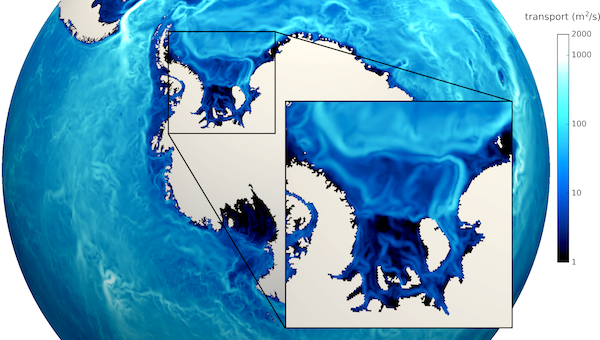Antarctic Submarine Melt and Southern Ocean Climate in Global, Coupled Simulations using the Accelerated Climate Model for Energy (ACME)
Critical to reducing uncertainty in projections of future sea-level rise is an improved understanding for how the Antarctic ice sheet will evolve in response to current and future climate. We discuss efforts towards simulating Antarctic ice sheet evolution within a global, coupled, Earth System Model, with a focus on validating Southern hemisphere climate and, in particular, sub-ice shelf (submarine) melt rates. Simulations are conducted with the U.S. Department of Energy’s Accelerated Climate Model for Energy (ACME), which includes variable-resolution, atmosphere, land, ocean, sea ice, and land ice components. Here, we focus on three sets of global simulations that explicitly include ocean circulation within static ice shelf cavities. These are aimed at assessing and understanding differences due to (1) the presence or absence of Antarctic ice shelf cavities, (2) prescribed (CORE) versus fully-coupled atmospheric forcing and, (3) low (non-eddying) versus high (eddy permitting) spatial resolution. Simulation differences and biases are discussed in the context of validation against observations of ocean water mass properties, sea ice extent and thickness, and submarine melt rates. We also discuss short- and longer-term strategies for applying validated, ACME-derived submarine melt rates towards simulations of Antarctic ice sheet evolution and future sea-level rise.

